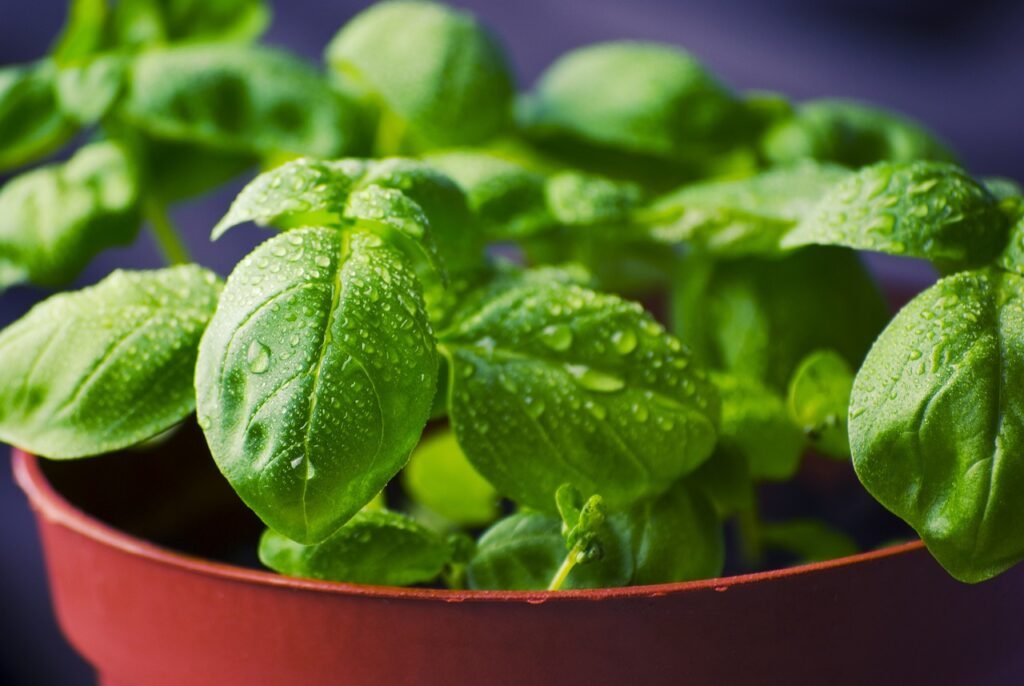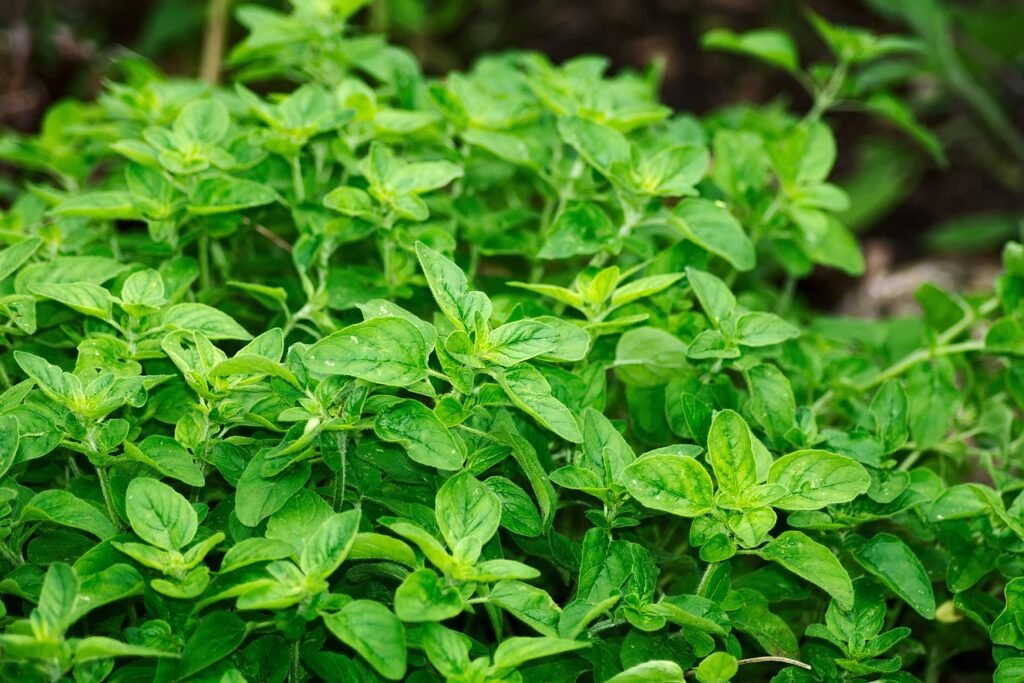Introduction
Parsley is a versatile herb that belongs to the same family as celery, carrots, and cilantro. It has two main varieties: flat-leaf (also known as Italian) and curly-leaf (also known as French). Parsley is widely used in Mediterranean, European, and Middle Eastern cuisines, as well as in salads, soups, sauces, stews, and garnishes. Parsley has a mild and slightly bitter flavor that complements many other ingredients.
However, parsley is not always available or suitable for every dish. Sometimes, you may need to find a parsley substitute that can provide a similar or different flavor, texture, color, or nutritional value.
Parsley Substitutes
Cilantro
Cilantro is one of the most popular parsley substitutes, especially in Asian, Latin American, and Indian cuisines. Cilantro is also known as coriander or Chinese parsley, and it has a bright green color and a distinctive citrusy and peppery flavor. Cilantro is rich in vitamin C, vitamin K, and antioxidants, and it may help lower blood sugar levels and cholesterol levels.

Cilantro is a great parsley substitute for dishes that require a fresh and zesty flavor, such as salsa, guacamole, curry, stir-fry, and rice.
Basil
Basil is another common parsley substitute that adds a sweet and aromatic flavor to many dishes. Basil is a staple herb in Italian cuisine, and it pairs well with tomatoes, cheese, garlic, and olive oil. Basil is also used in Thai, Vietnamese, and Indonesian cuisines, where it adds a spicy and licorice-like flavor. Basil is rich in vitamin A, vitamin K, iron, and manganese, and it may have anti-inflammatory and antibacterial properties.

Basil is a good parsley substitute for dishes that require a warm and fragrant flavor, such as pesto, pizza, pasta, salad, soup, and chicken.
Dill
Dill is another herb that can replace parsley in some recipes. Dill has a feathery texture and a mild and slightly sweet flavor that resembles anise or fennel. Dill is commonly used in Scandinavian, Eastern European, and Middle Eastern cuisines, as well as in pickles, salmon, potatoes, and eggs. Dill is rich in vitamin C, vitamin A, calcium, and iron, and it may help lower blood pressure and cholesterol levels.

Dill is an appropriate parsley substitute for dishes that require a subtle and delicate flavor, such as tzatziki, salmon gravlax, potato salad, cucumber salad, and dill sauce. You can use fresh or dried dill in place of parsley, but fresh dill has a more vibrant flavor and color.
Chervil
Chervil is another herb that can substitute for parsley in some dishes. Chervil is closely related to parsley, but it has a finer texture and a more delicate flavor that resembles parsley and tarragon. Chervil is widely used in French cuisine, especially in the herb blend “fines herbes”, which also includes parsley, chives, and tarragon. Chervil is rich in vitamin C, vitamin A, iron, and potassium, and it may have diuretic and anti-inflammatory effects.

Chervil is a fitting parsley substitute for dishes that require a mild and refined flavor, such as omelets, soups, sauces, salads, and chicken. You can use fresh or dried chervil in place of parsley, but fresh chervil has a more pleasant flavor and aroma. However, chervil has a more fragile texture than parsley, so you may want to add it at the end of cooking or use it raw.
Oregano
Oregano is another herb that can take the place of parsley in some recipes. Oregano has a robust and earthy flavor that adds a savory touch to many dishes. Oregano is a staple herb in Italian, Greek, and Mexican cuisines, and it goes well with tomatoes, cheese, olives, and meat. Oregano is rich in vitamin K, fiber, antioxidants, and antibacterial compounds, and it may help boost immunity and fight infections.

Oregano is a decent parsley substitute for dishes that require a strong and flavorful taste, such as pizza, pasta, lasagna, chili, and tacos. You can use fresh or dried oregano leaves in place of parsley, but dried oregano has a more concentrated flavor than fresh oregano.
Thyme
Thyme is another herb that can serve as a parsley substitute in some dishes. Thyme has a woody texture and a lemony and minty flavor that adds a depth and complexity to many dishes.

Thyme is widely used in French, Mediterranean, and Caribbean cuisines, and it pairs well with garlic, onion, rosemary, and sage. Thyme is rich in vitamin C, vitamin A, iron, and manganese, and it may have antifungal and antiseptic properties.
Leafy Greens
Spinach
Spinach not only adds color but also a mild earthiness to your dishes. It’s a versatile substitute in salads, omelets, and pasta dishes.
Arugula
For a peppery kick, consider arugula. It’s perfect for spicing up salads, sandwiches, and even pizza.
Watercress
Watercress offers a peppery and slightly bitter taste, making it an excellent choice for garnishing soups and salads.
Dried Herbs
Dried Parsley
If you have dried parsley on hand, it’s a no-brainer substitute. Use it in the same quantity as fresh parsley, but rehydrate it in a bit of water before adding it to your dish.
Dried Chives
Dried chives bring a mild onion flavor and vibrant green color to your recipes, making them suitable for dips, dressings, and potato dishes.
Dried Cilantro
Dried cilantro can be a worthy stand-in for dried parsley in Mexican and Tex-Mex recipes.
Citrus Zest
Lemon Zest
For a burst of freshness, consider using lemon zest as a parsley alternative in seafood, chicken, and pasta dishes.
Nuts
Almonds
Finely chopped almonds add a delightful crunch and nutty flavor when used as a garnish or coating for dishes like chicken or fish.
Spices
Celery Seed
Celery seed offers a mild celery-like flavor and is perfect for soups, stews, and coleslaw.
Vegetables
Celery
Fresh celery leaves or diced celery stalks can mimic parsley’s texture and add a subtle earthy flavor to your dishes.
Green Onions
Chopped green onions can provide a mild oniony flavor and a pop of color in salads, soups, and stir-fries.
Seaweed
Dulse
Dulse, a type of seaweed, lends a salty, umami flavor to your dishes. Use it sparingly as a parsley substitute in seafood recipes.
Dairy
Parmesan Cheese
Grated Parmesan cheese can be sprinkled over pasta, salads, or roasted vegetables as a flavorful parsley replacement.
Oils
Olive Oil
Drizzling extra-virgin olive oil over a finished dish adds richness and a subtle herbal note.
Condiments
Pesto Sauce
Pesto, with its basil and garlic base, can be a great parsley substitute in Mediterranean recipes.
Pickled Ingredients
Capers
Capers bring a tangy and salty flavor that complements fish and chicken dishes wonderfully.
Asian Flavors
Thai Basil
Thai basil offers a sweet, anise-like flavor and pairs perfectly with Asian dishes.
Edible Flowers
Chive Blossoms
Chive blossoms not only add a pop of color but also a delicate onion flavor to your salads and appetizers.
Fresh Vegetables
Radish Greens
Don’t discard radish greens! They have a peppery taste and can be used as a parsley alternative in salads and sautéed dishes.
Microgreens
Micro Parsley
If you want to stay close to the parsley flavor, opt for micro parsley, which is essentially young parsley plants. They make an excellent garnish.
Herbed Vinegar
Herb-Infused Vinegar
Herb-infused vinegar, such as tarragon or chive-infused varieties, can add depth to your salad dressings and marinades.
Kitchen Creativity
Mix and Match
Don’t hesitate to experiment by combining different parsley substitutes to create unique flavors in your dishes. Mixing cilantro and lime zest, for instance, can give your recipes a delightful twist.
Conclusion
Now that you’ve explored this extensive guide on parsley substitutes, you’re equipped with the knowledge to elevate your culinary creations to new heights. Whether you’re preparing a classic dish or experimenting with unique flavors, these alternatives will ensure that your recipes remain fresh, vibrant, and full of flavor.
Incorporate these parsley substitutes into your cooking repertoire, and watch as your dishes become the talk of the town. Say goodbye to limitations and embrace the creativity that comes with exploring new flavors. Happy cooking!
FAQs
What are the benefits of parsley?
Parsley is not only a flavorful herb, but also a nutritious one. Parsley is rich in vitamin C, vitamin K, vitamin A, folate, iron, calcium, magnesium, and antioxidants. Parsley may help support immune system function, blood clotting, bone health, eye health, and liver health. Parsley may also help prevent kidney stones, urinary tract infections, bad breath, and inflammation.
What are the drawbacks of parsley?
Parsley is usually safe, but excessive consumption may lead to allergies, skin irritation, or interactions with medications. Pregnant women should be cautious due to its potential to induce uterine contractions or bleeding. Consult a doctor if you have concerns.
Can I use dried parsley as a substitute for fresh parsley?
Yes, you can. Use an equal amount of dried parsley, but remember to rehydrate it before use.
Are there any parsley substitutes with a similar taste?
Cilantro and chervil have flavors that resemble parsley, making them excellent alternatives.
Can I use parsley flakes as a substitute for fresh parsley?
Yes, parsley flakes can be used as a substitute, especially in cooked dishes.
What is the best parsley substitute for salads?
Arugula, watercress, and spinach work well as parsley substitutes in salads, adding flavor and color.
Can I use parsley substitutes in baking?
While some parsley substitutes can be used in savory baking, it’s best to stick with the original parsley in most baking recipes.
Are there any health benefits to using parsley substitutes?
Many parsley substitutes offer their unique health benefits, such as cilantro’s antioxidant properties and spinach’s high vitamin content.





